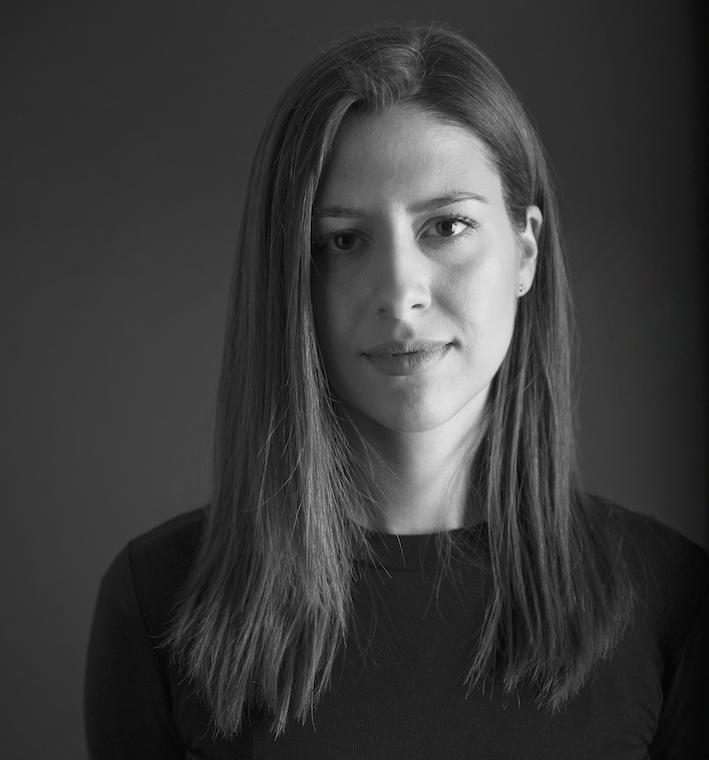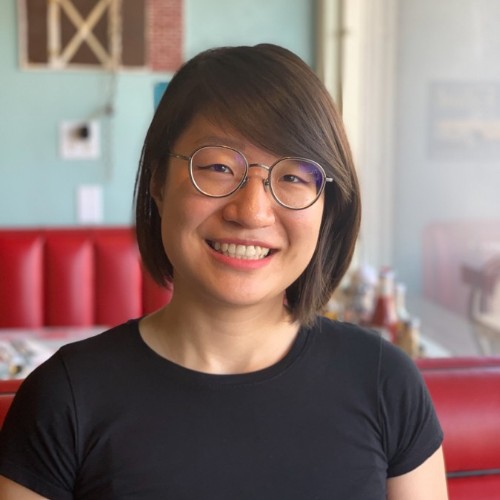In our brand-new “Path Tracing” series, we trace the many possible paths of a career in computer graphics research by gathering the perspectives of researchers who have tread a certain path. In this inaugural set of interviews, we examine a topic of interest to many PhD students facing a recent or impending graduation: whether to seek a post-doctoral research position. We asked two postdocs, Stephanie Wang (UCSD) and Mina Konaković Luković (MIT), to share a glimpse into their lives as postdocs and what motivated them to pursue this role. Stay tuned for more installments of this explorative series!
Meet Mina
Mina Konaković Luković is a Schmidt Science Postdoctoral Fellow in the Computational Fabrication Group at MIT CSAIL. Her research interests include computer graphics, computational fabrication, 3D geometry processing, and machine learning, including architectural geometry and design of smart materials. She received her PhD from Swiss Federal Institute of Technology Lausanne (EPFL) in 2019, and an MS and BS in Mathematics from the University of Belgrade in 2014 and 2013, respectively.
Meet Stephanie
Stephanie Wang is a postdoctoral researcher at UC San Diego studying applications of partial differential equations and optimization to physics simulation and geometric processing. She received her PhD in Mathematics from UCLA in 2020 and a BS in Mathematics from National Taiwan University in 2013.
Q & A with WiGRAPH
What is your current line of research and what drew you to it? How did it evolve during your PhD and since then?
Stephanie: People generally refer to my current field of research as Geometric Processing. This is a field adjacent to what I did in grad school, Physics Simulation. These two fields are literally adjacent—talks in Geometric Processing are often hosted in rooms next to Simulation talks at conferences. Though these topics are close, they are rarely discussed in the same room. I guess I was drawn to Geometric Processing due to this proximity. I was looking to do something more mathematical, and these talks next door always seem to be quite mathematically interesting.
Mina: My current line of research is quite different from what I was doing in my PhD studies. I was fortunate to receive the Schmidt Science Fellowship, which significantly influenced my postdoctoral studies and my research career. The fellowship encourages pivoting from your PhD expertise into a new research area and fosters interdisciplinary efforts. I have used this opportunity to acquire new skills and make new contacts. During my PhD, I was working on (discrete) differential geometry algorithms for designing and manipulating materials. Now I am entirely focused on artificial intelligence and developing novel machine learning algorithms. I am collaborating with a mechanical engineer, a chemical engineer, materials scientists, and roboticists to design new solutions for manufacturing problems and robotics applications. For my future research, I plan to combine both the knowledge from my PhD and postdoctoral studies.
Why did you decide to do a postdoc?
Stephanie: Postdoc is not a job that comes with the best benefits… I was fully aware of the trade-off: lower than industry average salary, stress of applying for jobs and almost certain relocation every few years, etc. Many people simply cannot afford the financial instability. I still wanted to do it because I crave to explore some research topics that might not be available in the industry.
Mina: After graduating from a European university, it is not so common (like in the US) to immediately start a tenure-track position. Typically, you need to do 1 or 2 postdocs before applying for a faculty job. Besides, a postdoc is a great time to enjoy the freedom to explore research questions outside of your expertise. You can take “risky” projects, which might be difficult in a tenure-track position or during the PhD.
What do you hope to accomplish by the end of your postdoc? What skills do you hope to nurture?
Stephanie: I don’t necessarily have any plans or expectations in this regard. Everything is new for me in this postdoc, and I feel happy as long as I feel my brain is exhausted from learning new things every day. I do find it stressful to hold certain expectations in academic work – when every research project comes with such high risk and uncertainty, thinking of the future and planning ahead often comes with disappointment. However, I’m not really sure if this mindset works for everybody.
Mina: By the end of my postdoc, I hope to enlarge the network of people I collaborate with, broaden my research scope, and be more prepared for a faculty position. Besides research, I have actively engaged in more training and workshops on mentoring, building a research lab, writing grant applications, and improving communication skills during postdoctoral studies. These skills are hard to focus on during PhD studies, which are demanding enough, but necessary for a future career in research.
How does your day-to-day life as a postdoc differ from life as a PhD student?
Stephanie: I wake up at 8:30 am, make tea and occasionally breakfast. Reply to emails. Make a to-do list consisting of reading, answering research questions, debugging programs, or making notes. Then I dive into these tasks, allowing myself to wander off if something strikes my curiosity. During the day I occasionally have to hop between meetings or spontaneous research chats in our lab voice channel. Around 6 pm I stop all work. I log things I finished during the day, then go exercise for an hour before dinner. Sometimes I return to work after dinner without any expectations. This is hardly similar to my PhD life because of COVID, but this is the schedule that gives me some serenity in this 2020 craziness.
Mina: As a PhD student, besides the courses, I was usually focused on one project at a time, at most two. Typically, I was the lead author on the project and needed to spend my time on all aspects of development – background check, theory, algorithm, testing, building physical prototypes. As a postdoc, I am now involved in many projects simultaneously. On some projects, I am a lead author or the only computer scientist; on others, I serve more as a mentor and a consultant. I also truly enjoy mentoring and helping new PhD students with their first research projects and publications.
When searching for postdoc opportunities, what questions did you ask potential advisors or colleagues that you found most illuminating? What criteria did you use to weigh different opportunities?
Stephanie: My postdoc mentor is an old college friend. We happened to go to graduate schools in the same city and worked in similar research fields. We always had amusing math discussions when we hung out. When he finished his postdoc and was about to start as an assistant professor, we discussed the pros and cons of working together thoroughly. At first, the idea of transitioning from friends to colleagues felt a bit weird. There were also considerations around switching fields and working with a starting faculty member. I was aware that a young mentor could come with no PhD students, have a smaller academic network, etc. That said, we went with it and our friendship definitely makes our day-to-day research work more delightful, and there’s nothing better than working with someone with a similar mathematical style.
Mina: On the one hand, continuing the same line of research as in the PhD will probably result in a productive time and many publications, but the acquired knowledge might be limited. On the other hand, deciding to dive into a new area may affect the amount of research output but greatly benefit the skills improvement and learning scope. I have decided to go down the second route. My main criteria were guided by how much I would be able to learn in the new lab and how collaborative the people from the lab are among each other and with researchers from different fields.





